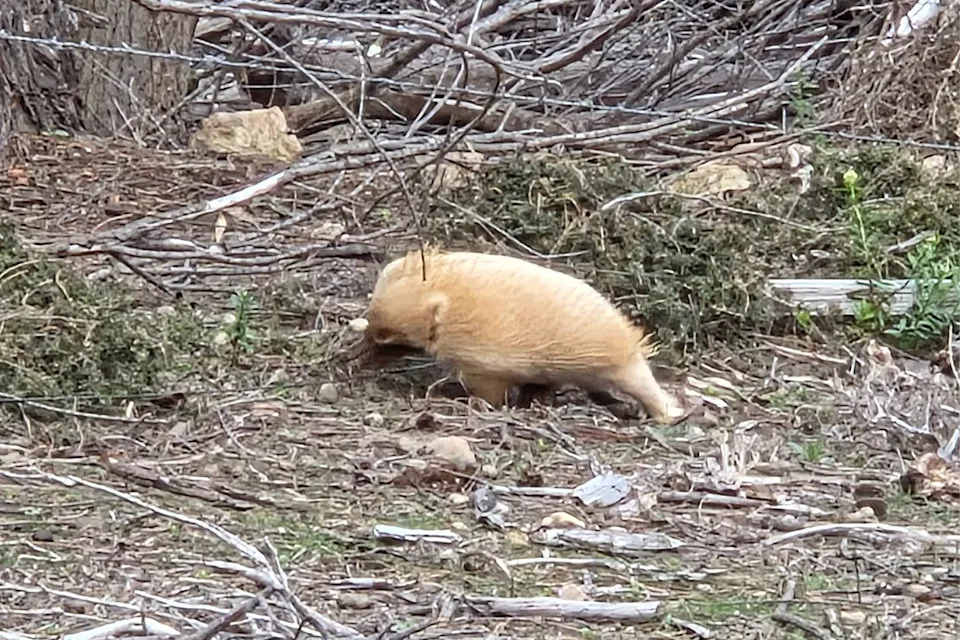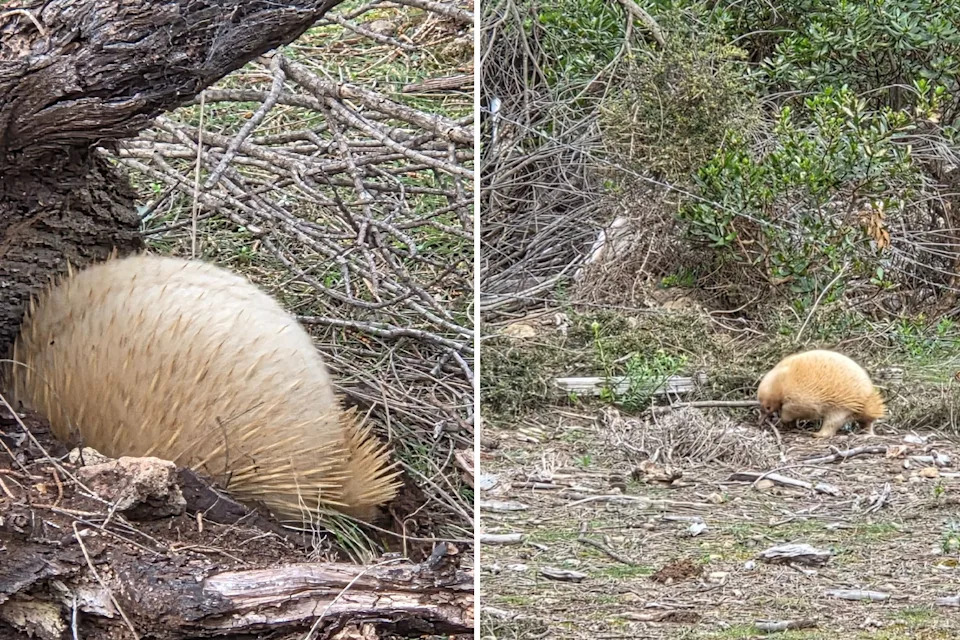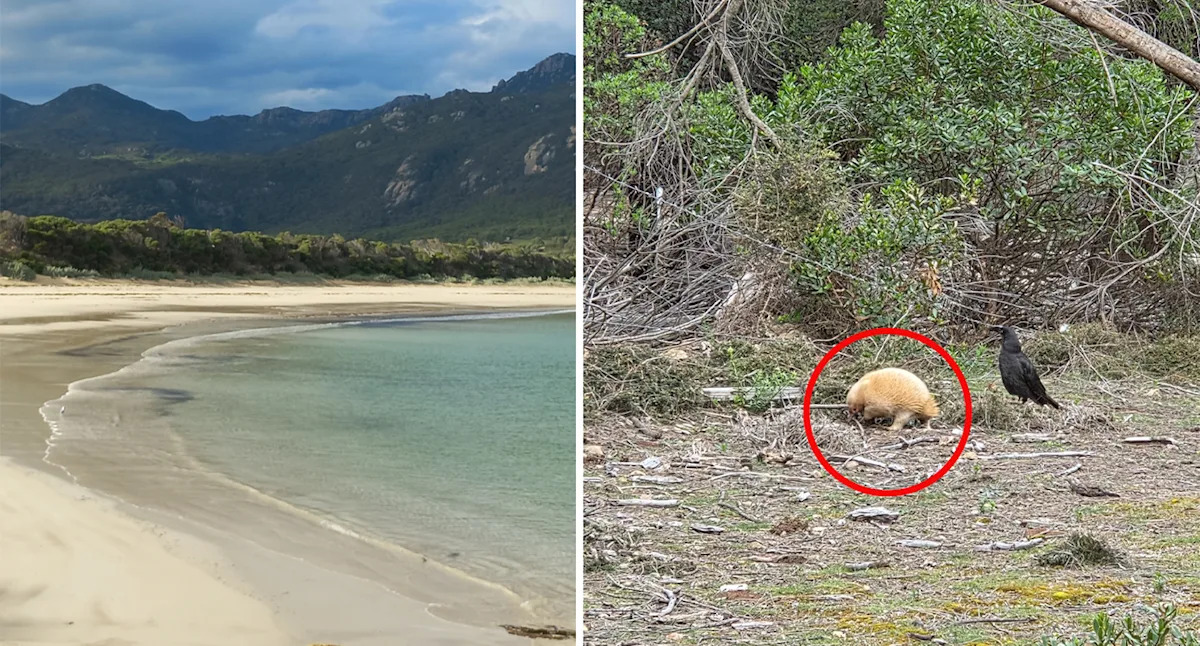Curiosity has been sparked in Australia’s south after a citizen scientist shared their exceptionally rare discovery on a remote island.
Posting incredible photos online this week, a woman on Flinders Island, north of the Tasmanian mainland, shared her excitement at stumbling upon a white echidna — a native animal hardly ever seen in the wild. The woman questioned an online community for information about the “gorgeous” mammal, which appears to have leucism, the term for a partial lack of pigment.
“Any comments would be very welcome, as [there’s] not a lot of information about them,” she pleaded.
Speaking to Yahoo News Australia, echidna expert at the University of Adelaide, Professor Frank Grutzner, explained how certain echidnas end up like this, and how the condition differs from albinism.

It’s quite rare to see a white echidna in the wild, outside of Flinders Island. Source: Ros Lester/Facebook
What is leucism, and how does it differ from albinism?
In most animals, specialised cells called melanocytes produce melanin, which gives colour to skin, fur, feathers, or scales. In leucism, a mutation — often inherited, but sometimes random — disrupts how those pigment cells form or spread through the body. As a result, some or all areas lack pigment.
“An albino is defined as an individual that is unable to produce any dark pigmentation, and the key characteristic is red eyes,” Prof Grutzner said. “This animal has a relatively dark face and sides, so I suspect it is not albinism.”
Prof Grutzner said there are a few reasons for animals “having white hair”, including genetic mutations affecting pigmentation (leucism), which is the “more likely explanation here”.
“It would definitely be very rare to spot a white echidna,” he said. “It is clearly an extraordinarily white animal.” As for the animals’ well-being, regardless of whether an individual has albinism or leucism, it can still be perfectly healthy and viable, Prof Grutzner added.
“We get sightings of white echidnas, and in the wild their colour can vary a lot,” he said.

The little creature is likely perfectly healthy, just genetically different. Source: Ros Lester/Facebook
People responding to the woman shared her thrill, including many locals from Flinders Island. “Gorgeous, very envious! Lucky you,” a woman said.
“We (here on Flinders Island) have blonde, brown, reddish and almost black,” added another.
“I guess it comes down to a closed gene pool,” suggested a third. “I’ve also noticed a lot of leucistic wallabies on Bruny [Island] before. I’m guessing a combination of lack of predators picking off the lighter coloured animals and limited gene pool.”
Prof Grutzner urged the public to submit echidna sightings to the EchidnaCSI project via the iNaturalist application. “With over 18,000 observations Australia-wide, this will help echidna research and conservation,” he said.
Love Australia’s weird and wonderful environment? 🐊🦘😳 Get our new newsletter showcasing the week’s best stories.

